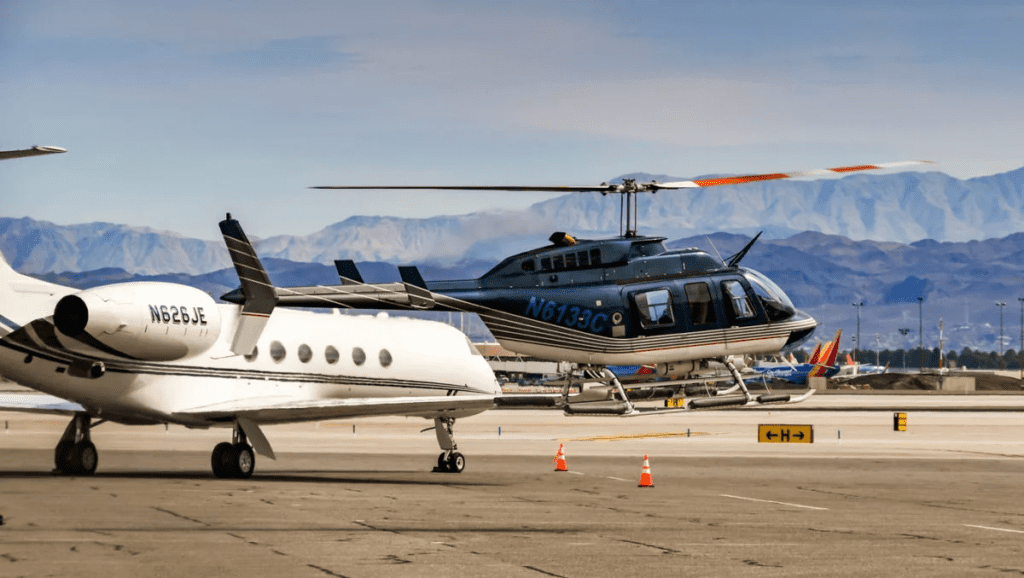
I will give you an active ATP pilot`s point of view. I am a dual rated ( both fixed wing and helicopter ATP rated pilot, and currently I fly both categories for a Fire Dept. (currently Bell 212/412 and a King Air B200). I have been flying continuously since 1973, when I started as a boy flying gliders.
With the type of work I do – mostly SAR, mountain rescues with a hoist, on-scene medevacs, and fighting fires with a Bambi Bucket, – often flying over inhospitable and mountainous terrain- I feel more more comfortable flying a helicopter because I have more options. Let me explain:
All helicopters can autorotate successfully to the ground. It is a FAA certification requirement. Sure, a helicopter rotor or transmission system can have a mechanical malfunction, it`s true, but so is an airplane’s wing which can also have mechanical failures of control surfaces. One checks these things very well before flight. It’s called a preflight inspection.
But here is the main reason for me: in the medium size twin engine helicopter I fly right now, if it becomes necessary, I can autorotate it to land into a very small area in case of an emergency (e.g dual engine failure, total tail rotor thrust failure). We practice this skill twice a year both in a simulator and in real life, cutting the engine to idle, and making an autorotative landing to the ground and consistently into a small area (about 200 sq ft pad). A helicopter does not need a long field/runway to put it down, so it does not need to glide far to find a small opening. Besides, since my aircraft is a twin engine, the chance of both engines failing at the same time is extremely small.
On the other hand, an airplane, in case of a total engine failure, if it cannot glide to an airport or open smooth water, then it will need a long smooth field/runway to make a forced emergency landing that is survivable, otherwise it will hit trees, rocks, ruts, and it will break up, probably killing most, if not all, onboard.
Also in case of getting caught in bad weather or in a low-fuel situation in a helicopter, I can land safely in any open field and wait out the storm, or wait to get fuel. The point is I am on the ground safe, while an airplane has to go find an airport to do so, or try to fly around the weather if it can, or penetrate it. And the nearest airport may not be always suitable.
A helicopter also flies closer to the ground (usually between 500 ft and 1000 ft above the ground). While this can be a double edged sword, it also means that in case of an inflight emergency (eg. an engine fire), I can be on the ground safe in a minute or two. And I can land in any small place, a road, a small open field, a clearing in the mountains, just about anywhere. An airplane, on the other hand, usually flies much higher, plus it will have to fly to, and land in an airport, which might take many more minutes longer to descend and cover the distance to get to a suitable airport, … often much too long when the engine is on fire and the wing is about to melt off, or the cockpit is filling up with smoke.
Yes, while it is true that global helicopter accident statistics are worse than fixed wing, this has to be taken in context. Modern helicopters, if properly maintained and flown by a proficient, experienced and conscientious pilot can be just as safe as fixed wing especially from a mechanical standpoint. Most helicopter accidents happen due to the type of environment that helicopters fly in, and the type of work that they are required to do (like emergency Medevac flights landing at night on roads, hovering out of ground effect doing long-line work, doing mountain rescues with a cable hoist, doing high-voltage powerline repairs; not to mention military missions like dust-off, rescues, and landing in hot LZs under enemy fire, etc…).
If helicopters did the same type of flying that airplanes do, that is, flying only from one airport into another, then I am sure the accident statistics of helicopters would be about the same as airplanes, but that will never happen because that is not what helicopters are built for. Helicopters always fly the dangerous missions that airplanes cannot do.
WIth that in mind, the most frequent reasons for helicopter accidents are: 1. hitting wires that you don’t see (avoided by flying higher), 2. VFR flying inadvertently into IFR weather without a flight plan or IMC skills (avoided by having good pilot judgement to not do it), 3. Poor Initial Training, 4. Running out of tail rotor authority during a high mountain rescue (avoided by lots of high altitude mountain flying experience).
I fully recognize that many people will not agree with me on many of the reasons I have mentioned. And that’s perfectly fine. I am merely stating my personal experience and my reality in the type of flying work that I have been involved most of my life. Helicopters have always given me more options to get myself out of trouble.
Author – Attila Gyuris





